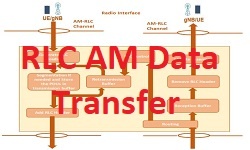IoT Access Technologies
IoT Access Technology is spread across licensed and unlicensed spectrum and there are several number of Radio technologies.At high these access can be classified in two categories:
- Non –Cellular Technologies
- Cellular Technologies
Brief about these technology is shown in below
Each of the technologies available for IoT connectivity has its own advantages and disadvantages. However, the range of IoT connectivity requirements – both technical and commercial – means cellular technologies can provide clear benefits across a wide variety of applications. While choosing technology following requirement needs to be considered
- It should have Global Reach
- Matured Ecosystem
- Diverse and Secure
- Scalable and QoS support
- Low Total Cost of Ownership (TOC)
Considered all above requirements regarding access network the best option is the Cellular Network Technologies.In terms of global reach, cellular networks already cover 90 percent of the world’s population. WCDMA and LTE are catching up, but GSM will offer superior coverage across the Globe. Cellular networks have been developed and deployed over three decades, and they will be around for the foreseeable future. The cellular mobile industry represents a huge and mature ecosystem, incorporating chipset, device and network equipment vendors, operators, application providers and others.
The global cellular ecosystem is governed by the 3GPP standardization forum, which guarantees broad industry support for future development. When it comes to scalability, cellular networks are built to handle massive volumes of mobile broadband traffic; the traffic from most IoT applications will be relatively small and easily absorbed. Operators are able to offer connectivity for IoT applications from the start-up phase and grow this business with low TCO and only limited additional investment and effort.
Cellular connectivity offers the diversity to serve a wide range of applications with varying requirements within a network. QoS mechanisms is essential for many IoT applications and cellular systems have mature QoS functionality, and this enables critical IoT applications to be handled together with traffic from sensors, voice and mobile-broadband traffic on the same carrier.
Traditionally, the security mechanisms of cellular networks have been based on a physical SIM attached to the device, referred to as a Universal Integrated Circuit Card (UICC). This has also enabled roaming between operators, which has been one of the main factors behind the huge success of mobile networks. The SIM will also be essential in future IoT applications, with SIM functionality embedded in the chipset (eUICC) or handled as a soft-SIM solution running in a trusted run-time environment of the module. One network connecting the whole diversifying IoT market will guarantee the lowest possible TCO as well as fast time to market.



